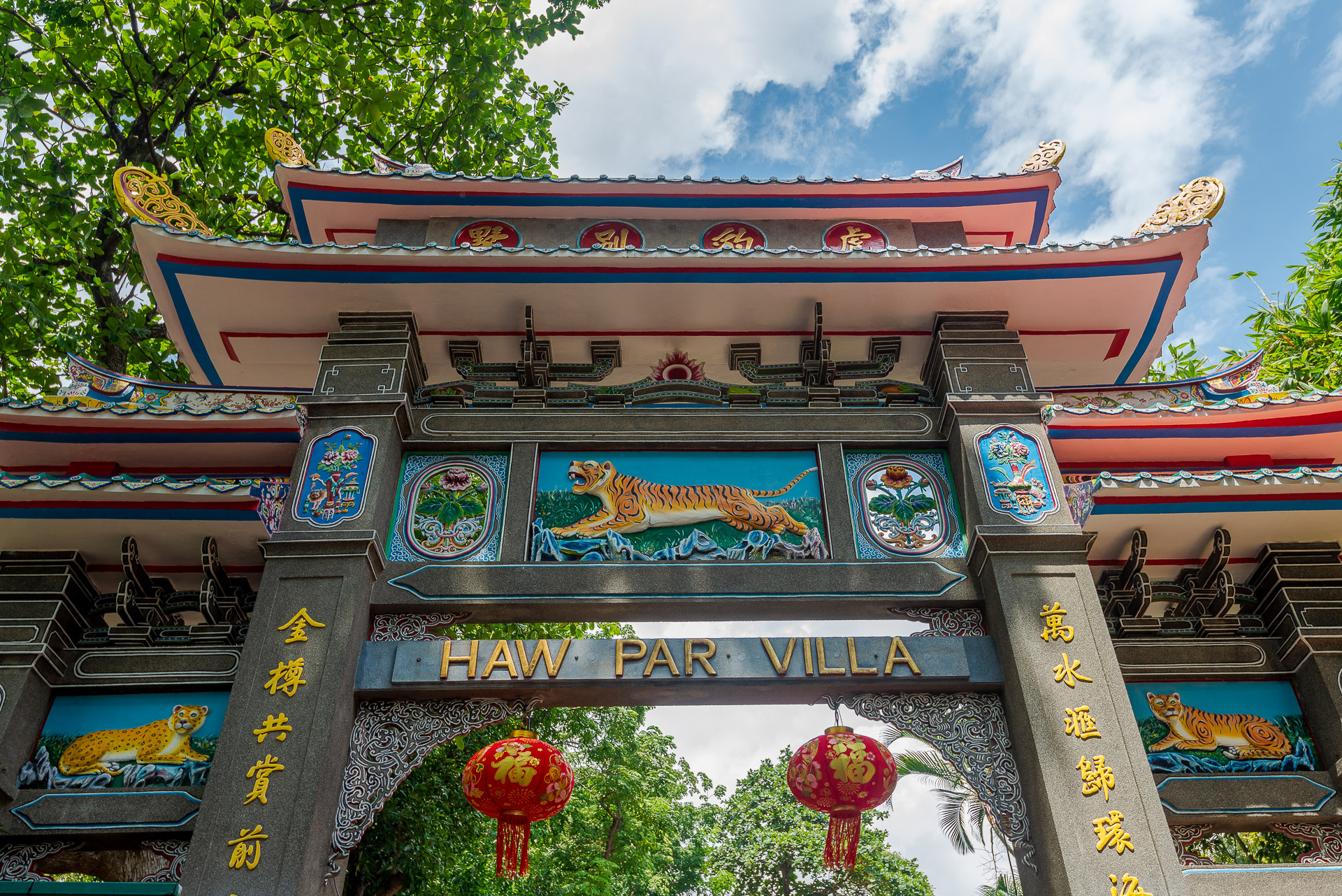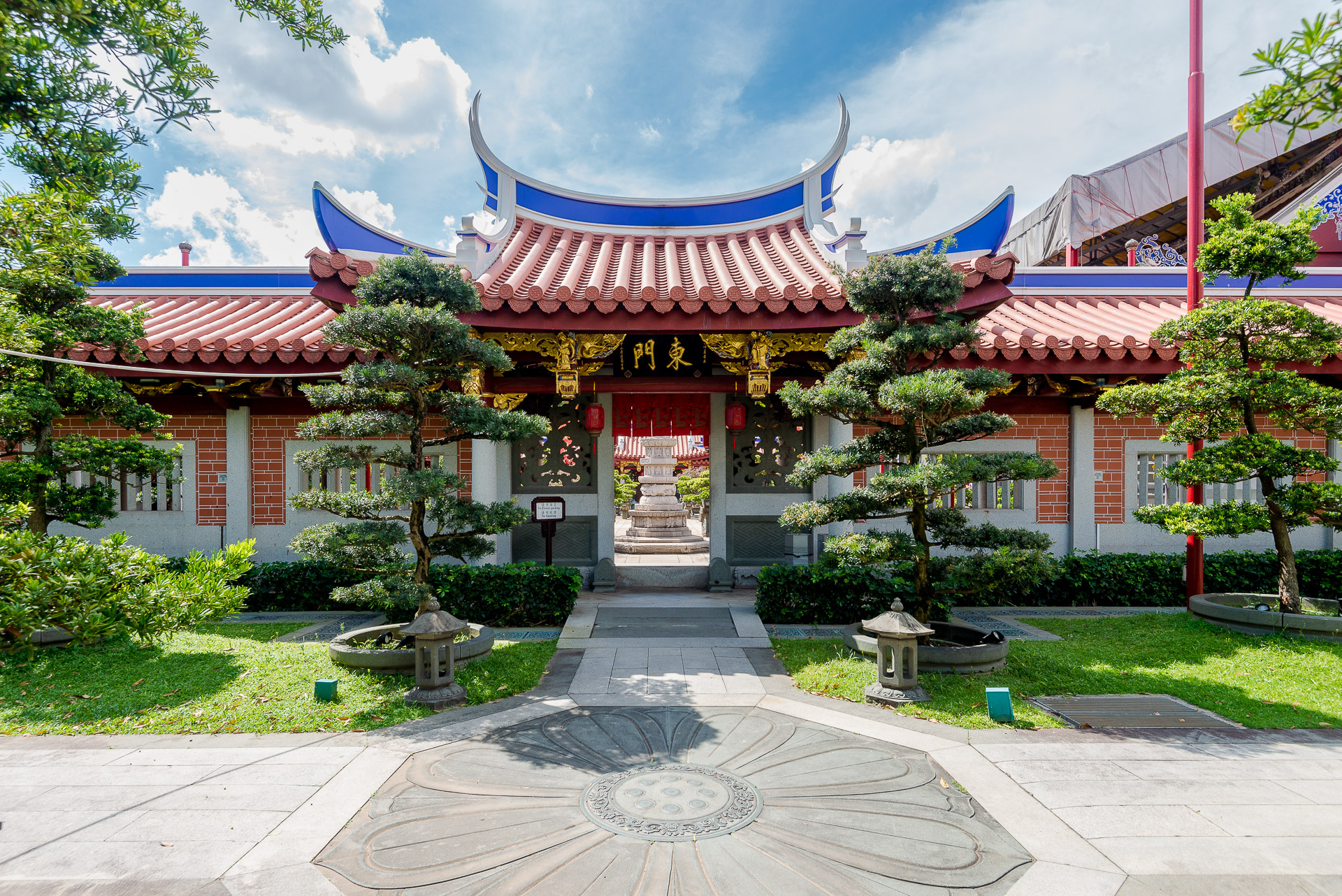With my second trip back to Singapore, this time travelling alone, my list of things to do and to photograph differed from my first trip. After doing all the touristy things, this time around I was keen to explore and photograph things off the tourist map. I was in Singapore for just under a month so I had plenty of time to take my time exploring.

Istana Woodneuk
Hidden in the thick vegetation between Holland Road and Tyersall Ave is Istana Woodneuk. An abandoned palace. The current palace was completed in 1935, in time for the celebration of the 62nd birthday of the Sultan of Johor. During WW2 the palace served as military headquarters and a hospital. The land and palace are owned by the State of Johor. In 1951 they Sate of Johor spent S$15 500 to re-roof the palace. By the 1990s the surrounding park was inaccessible to the public and the palace had fallen into ruin. In 2006 there was a major fire and the palace burned down and the roof with its blue roof tiles caved in. You can still see shattered blue roof tiles covering the floor.
As the palace stands today it’s eery and dark inside. The walls are covered in graffiti with peeling paint. The parquet flooring is swollen in places where water has dripped in through the open ceiling. The size of the main entertaining areas is vast with a grand staircase leading upstairs. Some of the wooden steps have rotted away and you have to be careful how you make your way upstairs. Upstairs seems to be where the bedrooms were with ensuite bathrooms and big balconies.
The palace and surrounding area has a value of S$4,7 billion.
Pulau Ubin
Pulau Ubin is an island situated in the north east of Singapore. Pulau Ubin first appeared on a map in 1828. The island became known for its granite which supplied the construction industry. The quarries closed down in the 1970s and as jobs dwindled, residents began to leave. As of 2012 only 38 people live on the island.
Getting to the island is by a bum boat, sharing wooden benches with other tourists and locals. The trip is only about 10 minutes and you have to wait till the boat is full before setting off.
Pulau Ubin is one of the last areas in Singapore to have been preserved from urban development. The wooden houses, wooden jetties, relaxed inhabitants and untouched nature make it the last witness of the old kampung Singapore that existed before modern times.
Haw Par Villa
Haw Par Villa contains over 1000 statues and 150 dioramas depicting scenes of Chinese mythology, folklore, legends, history and various aspects of Confucianism. As you enter the park, the scale and detail of the dioramas and statues is quite something.
At the entrance to the park you’re invited to put 10c in the honesty box and light a joss stick. The burning of joss sticks is one of the fundamental acts of Chinese culture. To those who believe, burning Jos sticks opens a channel of communication with the divine, which allows blessings to be sought for the living. It’s normally customary to offer odd numbers of Jos sticks. Three joss sticks are usually offered connecting Heaven, Earth and Mankind.
The park was the brainchild of brothers Aw Boon Haw and Aw Boon Par, the developers of Tiger Balm. They moved their business from Burma to Singapore in 1926. In 1935 they purchased the land where Haw Par Villa is today based on considerations of Feng Shui. On the site they built a villa was built but was later bombed by the Japanese during WW2. After the war the villa was demolished. Between 1937 and 1954, Boon Haw commissioned statues and dioramas in the garden that served to teach traditional Chinese values.
Aside from the dioramas there are plenty of statues of mythological figures and other statues such as the Laughing Buddha, the 12 animals of the Chinese zodiac and the Gods of happiness, prosperity and longevity. There are also large monuments dedicated to the Aw brothers and their parents.
Lian Shaung Lin Monastery
The Lian Shan Zhuang Lin Monastery is a Buddhist monastery located in Toa Payoh. The temple was founded in 1898 and is the oldest monastery of its kind in Singapore. The temple boasts a seven storey gold-topped pagoda which is a replica of the 800-year old Shantung temple pagoda in Fujian. The drum and bell towers are thought to be the last of their kind in Singapore.
When we arrived there was a slight breeze so all the little bells on the pagoda were ringing. It was quite calming, with the monks chanting in the background. As you walk through the gate you feel as though you’ve stepped back in time, away from the hustle and bustle of busy Singapore.
The main gate of the temple have doors decorated with brightly painted Buddhist guardians. The central door features a bronze knocker held in the mouth of a snail-shaped creature that represents one of the nine sons of the dragon.
The adjoining courtyard that led to the Hall of Celestial Kings had numerous bonsais all over. Some small and some massive ones. Unfortunately other halls were closed for renovations so we took a walk up to the hall where monks and other people were chanting.














































Leave a reply